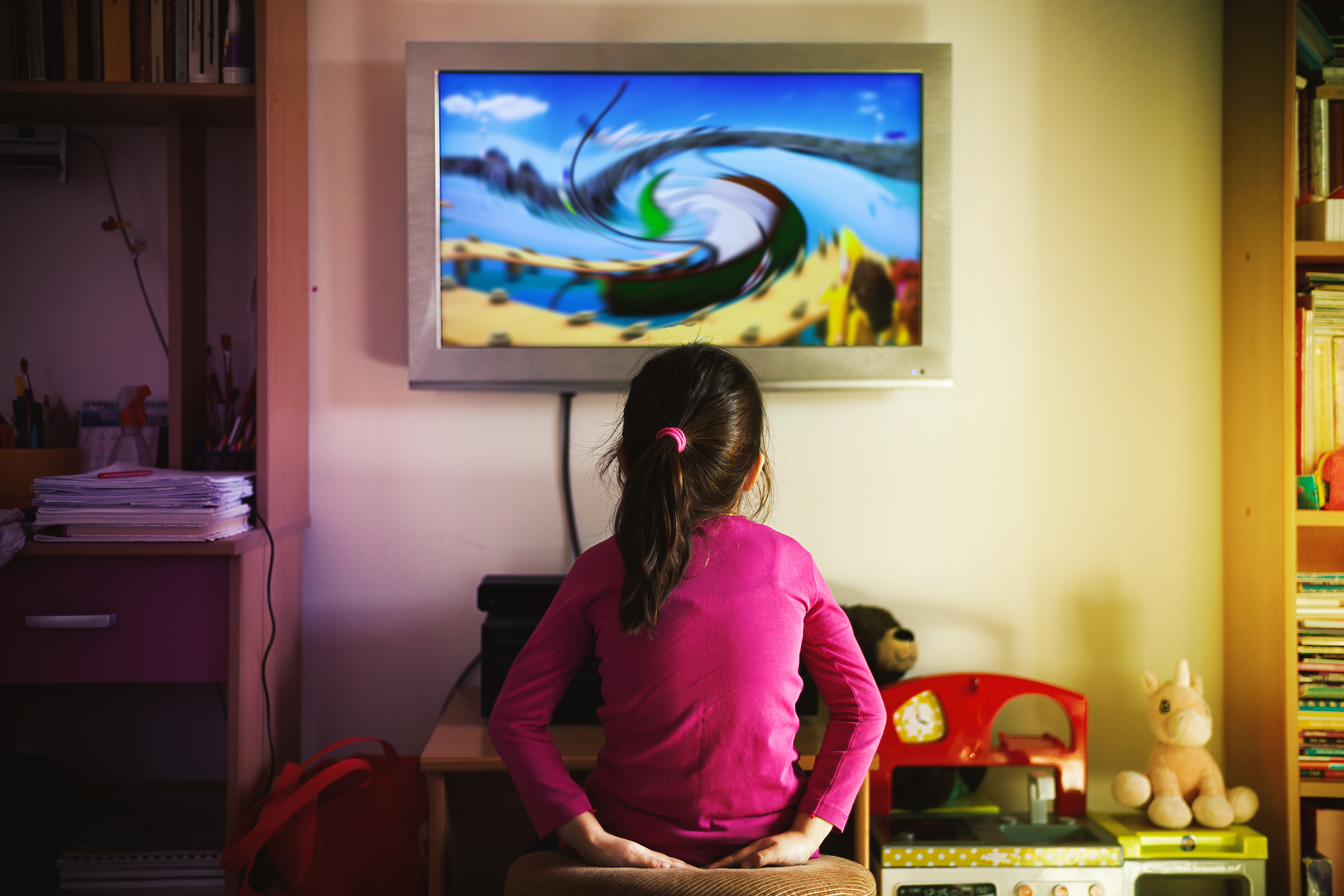A survey of American children ages 8 to 18 showed that an estimated 71% have a TV in their room. Parents who haven’t permitted this yet may wonder at what age it should be allowed and what the impacts of having a TV in a child’s bedroom are.
The most reasonable time for allowing a TV in a child’s bedroom is when they become a teenager. Substantial research shows the adverse side effects of TVs in younger childrens’ bedrooms. When a child matures, they could explore the option of a TV in the bedroom as a joint decision with their parents.
This article will discuss why some parents say yes to a TV in a child’s bedroom and why some parents say no. In addition, the article will explore the reality of the digital age. Finally, practical guidance will be provided regarding the recommended amount of TV time for children, measures to consider regarding children and TV, alternative activities, and a family media agreement.

Consider a TV in the Bedroom for Your Teenager
The appropriate age to allow TVs in bedrooms isn’t straightforward, which is why there’s continued discussion about the topic. Let’s dive into the reasoning behind waiting until a child is a teenager until allowing a TV in their room.
Research supports broaching the subject when your child is a teenager. One study analyzed the habits of almost 2,000 children. The results concluded children with TVs in their room at four years old had more unhealthy habits when they reached 12 years old.
The study found children with a TV in their room were more likely to have a higher body mass index, unhealthier eating habits, less social abilities, and higher levels of emotional distress, depression symptoms, victimization, and physical aggression.
As such, it seems advantageous to confine TV watching to common household areas while children are in their more formative years.
Once a child becomes a teenager, you’ll have a deeper understanding of your child’s tendencies. Therefore, you can decide if having a TV in their bedroom is suitable for healthy habits. If your teenager has healthy habits, maintains your trust, and would do well with a TV in their room, you can have discussions together to determine rules of TV usage.
Why Some Parents Say Yes to a TV in a Child’s Bedroom
If allowing a TV in a child’s bedroom is a widely debated topic, what’s the reasoning behind the parents who allow it? Well, parents cite numerous benefits to their children having TVs in bedrooms. Here are the most common reasons:
- A TV in a child’s bedroom provides more flexibility regarding what to watch. Parents could view a more mature show in the living room, while a child can watch age-appropriate programs independently.
- Children have the freedom to unwind and watch TV in their own space. Alone time is beneficial for children and parents alike. Especially at the end of the day, everyone needs to relax.
- Multiple TVs lessen family conflict over shows to watch. If each person can watch their pick, there could be more peace in the household!
Ultimately, some parents allow TVs in their children’s bedrooms because they feel it’s best for their family.
Why Some Parents Say No to a TV in a Child’s Bedroom
While some allow a TV in a child’s bedroom, other parents believe it’s inappropriate. Many of their reasons regard instilling healthy habits and engaging in activities that don’t involve screen time as a family.
A few reasons:
- Keeping TVs in common areas encourages more time together. As a screen in the bedroom won’t be a distraction, the likelihood of more time spent as a family is higher.
- Screentime is more easily managed. With TVs in common areas, parents have a better pulse on time spent watching TV and what programs their children are watching.
- Less TV allows more time for other activities. Typically, having fewer TVs equals less time spent watching TV. This allows for more activities like reading and board games.
As illustrated, keeping a child’s bedroom a TV-free zone is beneficial for those who’d like to maximize the number of activities and time in the day.
Recommended Amount of TV Time for Children
It’s essential to address the recommended amount of overall screen time according to experts. The American Academy of Pediatrics recommends the following guidelines:
| Age | Amount of Screen Time |
| Under 18 months | None, except for video chats with friends and family |
| 18 months – 24 months | Some with a parent or caregiver |
| 2 years and up | 1 hour a day of educational programming |
If these guidelines seem overwhelming because they’re different from what you’re currently doing, don’t fret. Analyze the amount your children watch TV, and consider how it serves your family. If you’d like to make a change, start small and work towards your goal.
Each family has a unique makeup, and parents will work hard to make the best decisions for their kids. Knowledge of the recommended guidelines provides a useful starting point in doing so.
Measures To Consider Regarding Children and TV
When your child does watch TV, there are some best practices to employ. These apply whether or not your child has a TV in their room.
Tips to encourage healthy TV time:
- Engage in the program with your child. Make the TV show a relationship-building opportunity by asking questions and sharing interests with your children.
- Ensure there’s no TV time 1 hour before bedtime. The American Academy of Pediatrics found that screen time negatively impacted the quality of sleep in 90% of school-aged children.
- Employ parental controls. For most devices, you can manage both screen time and content allowed. A simple Google search can provide you with specifics regarding the device you have.
- Set an example of healthy screen habits. You’re your child’s first and best teacher! Demonstrate boundaries with watching TV by having screen-free family time and limiting the amount of time you watch.
Alternative Activities to TV
When asked why their children watch TV, many parents discuss the opportunity for independent time (for both the parents and child), educational content, and fun. But you can achieve the same results by doing other activities, such as:
- Reading a book (independently, with a sibling, or with a parent)
- Playing a board game
- Spending time in the backyard or at the park
- Going on a walk
- Coloring or doing crafts
- Cooking together
Yes, most of these activities may require more effort or attention than watching TV. However, the activities present an excellent opportunity to build memories as a family together!

The Reality of the Digital Age
While discussing what age to allow a TV in a child’s bedroom is a meaningful conversation, it’s important to also acknowledge the reality of the digital age in which we live.
When most of today’s parents were children, the concept of TV was a very different one. TV was a specific device that was the only way to watch entertainment.
Now, TV takes on many meanings. TV is essentially a longer form of entertainment that viewers can watch. Someone can ‘watch TV’ on a phone, tablet, or even the computer. It’s no longer confined to a specific device.
This article addresses the variety of digital devices available because much of what’s discussed applies to any streaming device. While the article’s subject is explicitly focused on TVs, the content can be extended to your specific device situation in your household.
Regardless, the physical TV still has its place. Based on a 2020 study of American viewers, 58% preferred to stream content on a TV. Computers and mobile devices came in 2nd and 3rd places, respectively. Screens fill our world, and parents should consider what is best for their family regardless of what type of screen it is.
Family Media Agreement
Creating a family media agreement is useful in guiding discussions and establishing boundaries regarding media use in your household. Because all family members are involved, children are better set up for success with technology usage. Set expectations help children to thrive.
Media has many aspects, and often situations can pop up for which parents may be unprepared! A family media agreement helps parents by providing a wide range of digital topics to explore which may have been previously unknown.
A helpful resource is Common Sense Media. The website provides numerous resources for adults to help guide children through the digital age, including a Common Sense Family Media Agreement.
Therefore, when discussing technology usage for your children, including whether or not to allow a TV in the bedroom, start with a family media agreement.
Final Thoughts
In the digital age, technology is a significant component of parenting. Many look for the best way to encourage a healthy relationship between their children and devices.
As for TVs in bedrooms, keeping TVs in common areas is recommended until children are teenagers. Then, based on the teenager’s habits and level of responsibility, parents can discuss a TV in the bedroom.
Watching TV is an entertaining pastime beneficial to parents and children alike when used purposefully.
Sources
- Greats!chools.org: Is there a TV in your child’s room?
- ScienceDaily: A television in the bedroom?
- Statista: Devices used to watch online video in the US 2020
- KidsHealth: Screen Time Guidelines for Babies and Toddlers (for Parents)
- PediaLink: Digital Media and Sleep in Childhood and Adolescence
- Common Sense Media: Family Media Agreement
